Looking to conference room design for your modern office in Bangladesh? Unlock the secrets of creating a functional and stylish space with our comprehensive guide.
From considering the right technology and location to focusing on interior design elements, we’ll help you create a conference room that meets all your needs. Want to make your conference room cozy and inviting? We’ve got you covered with some design ideas and office makeover tips that will transform your space into a comfortable and welcoming environment.
Plus, browse examples of well-designed conference rooms, meeting spaces, and boardrooms for additional inspiration. So, whether you’re starting from scratch or looking to revamp your current conference room, we have all the information you need to create a space that meets your needs and impresses your clients and employees.
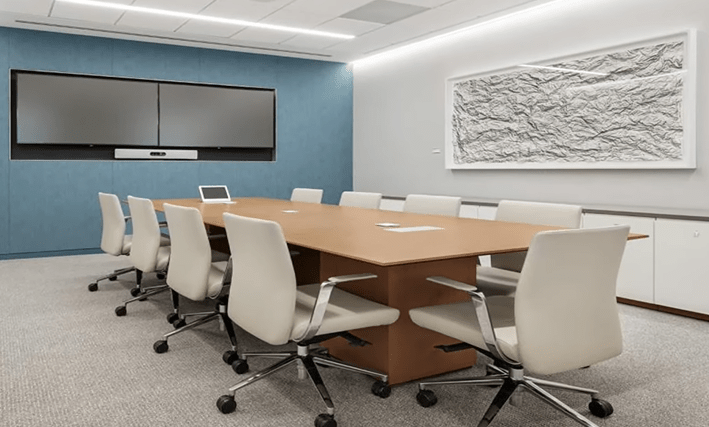
Key Elements Of Modern Conference Room Design
Technology Integration And Connectivity
In modern conference room design, technology integration and connectivity are key elements to consider. With the advancement of digital technology, it is essential to have a conference room that is equipped with the latest tools and devices to enhance productivity and collaboration. This includes seamless integration of audiovisual (AV) systems and video conferencing tools, interactive displays and smart boards, as well as wireless connectivity for presenters. By incorporating these technologies, your conference room will be equipped to handle any type of meeting or presentation, whether in-person or remote.
Seamless Av Systems And Video Conferencing Tools
Effective communication is crucial in conference room settings. To ensure seamless audio and video quality during meetings, it is important to invest in high-quality AV systems and video conferencing tools. This includes installing state-of-the-art cameras, speakers, and microphones that can capture and transmit clear audio and video signals. Additionally, video conferencing tools such as Zoom, Microsoft Teams, or Cisco Webex provide seamless connectivity and enable participants to join meetings from anywhere in the world.
Interactive Displays And Smart Boards
Interactive displays and smart boards have revolutionized the way presentations and brainstorming sessions are conducted in conference rooms. These advanced tools allow participants to engage with the content and collaborate in real time. With touch-screen capabilities and interactive features, ideas can be easily shared and discussed, leading to more productive and creative meetings.
Wireless Connectivity For Presenters
Gone are the days of tangled wires and limited mobility for presenters. With wireless connectivity, presenters can seamlessly connect their devices, such as laptops or tablets, to the conference room display or projector. This not only eliminates the need for cumbersome cables but also allows presenters to freely move around the room while delivering their presentations.
Spatial Planning And Layout
The spatial planning and layout of a conference room play a vital role in fostering collaboration and productivity. Open floor plans have become increasingly popular as they promote a sense of openness and encourage communication among participants. By utilizing open floor plans, you can create a collaborative space where ideas can flow freely and discussions can take place without any barriers.
Utilizing Open Floor Plans For Collaborative Spaces
Open floor plans provide a flexible and inclusive environment for collaborative work. By incorporating flexible and modular furniture, you can easily create different configurations to suit the needs of each meeting. This allows for easy customization based on the size of the group or the type of meeting being conducted.
Creating Flexible Configurations With Modular Furniture
Modular furniture is designed to be versatile and adaptable, allowing you to effortlessly reconfigure the conference room based on different meeting requirements. Tables and chairs can be easily rearranged to create different seating arrangements, whether it’s a formal presentation or an informal discussion. This flexibility ensures that the conference room remains functional for various types of meetings.
Designing Zones For Breakout Sessions And Informal Discussions
To encourage collaboration and brainstorming, it is important to have designated zones within the conference room for breakout sessions and informal discussions. These zones can be created using movable partitions or furniture arrangements that provide privacy and a more relaxed atmosphere. By providing these breakout areas, you can facilitate more in-depth conversations and encourage the exchange of ideas among participants.
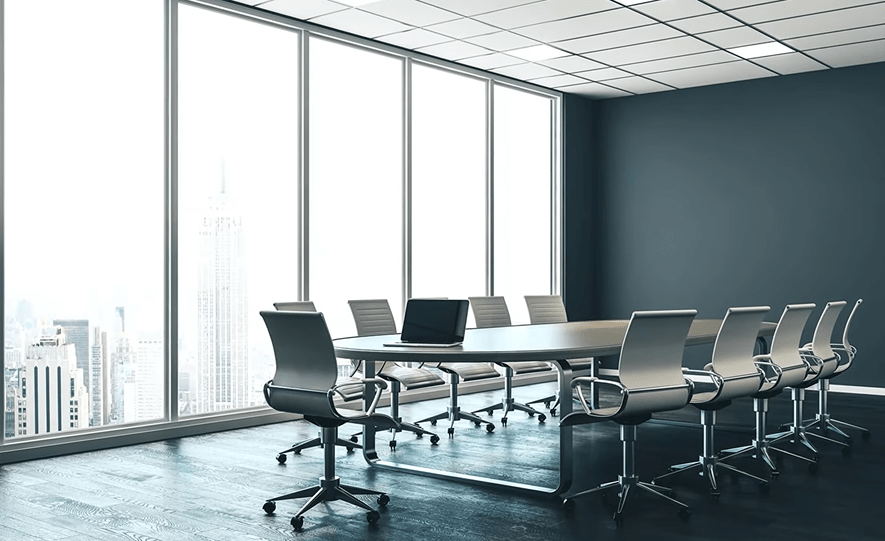
Ergonomics And Comfort
Considering the ergonomics and comfort of conference room furniture is crucial to ensure the well-being and productivity of meeting participants. Prolonged sitting can lead to discomfort and fatigue, so it is essential to choose ergonomic chairs that provide proper support for the body. This helps to reduce the risk of musculoskeletal issues and promotes better focus and engagement during meetings.
Ergonomic Seating For Prolonged Sitting
When selecting chairs for the conference room, opt for ergonomic designs that offer adjustable features such as height, backrest, and armrests. These features allow users to customize their seating position and support their body’s natural alignment. Ergonomic seating promotes good posture and reduces the strain on the back, neck, and shoulders, making meetings more comfortable and productive.
Adequate Lighting To Reduce Eye Strain
Proper lighting is essential in conference rooms to create a comfortable and visually appealing environment. Adequate illumination helps to reduce eye strain and fatigue, ensuring that participants can focus and engage effectively. Incorporate a combination of natural and artificial lighting sources, such as windows, overhead lights, and task lighting, to provide balanced illumination throughout the space.
Soundproofing And Acoustic Solutions For Privacy
Privacy is crucial in conference rooms, especially during confidential meetings or discussions. Soundproofing and acoustic solutions help to minimize distractions and ensure that conversations remain confidential. This can be achieved by using sound-absorbing materials on the walls, installing acoustic panels or ceiling tiles, and using sound-masking technology to enhance privacy and reduce noise interference from adjacent areas.

Enhancing The Aesthetics Of Conference Rooms
Incorporating Nature-inspired Elements
Enhancing the aesthetics of conference rooms can be achieved by incorporating nature-inspired elements. The use of natural materials such as wood, stone, and bamboo can add a touch of warmth and organic appeal to the space. Incorporating live plants and greenery not only enhances the visual appeal but also improves air quality and creates a sense of calmness. By bringing nature indoors, conference rooms can provide a refreshing and rejuvenating environment for productive meetings.
Greenery And Plant Installations
Greenery plays a crucial role in creating a visually pleasing conference room. Installing potted plants, hanging planters, or living walls can instantly transform the space. Plants not only add color and texture but also contribute to better air quality and overall well-being. It is important to select low-maintenance plant varieties that thrive indoors and require minimal care. Greenery can be strategically placed to create focal points and enhance the aesthetics of the conference room.
Biophilic Design Principles For A Calming Environment
Biophilic design principles can be effectively applied to conference room design to create a calming and soothing environment. Incorporating natural materials, colors, textures, and patterns can simulate a connection with nature and improve cognitive function. Use earthy tones, organic shapes, and natural light to create a harmonious atmosphere. By incorporating biophilic elements, conference rooms can promote creativity, well-being, and productivity among attendees.
Creative Interior Design Concepts
Creative interior design concepts can elevate the aesthetics of conference rooms. Embrace innovative ideas such as unconventional furniture arrangements, statement pieces, and unique design elements that reflect the culture and values of the organization. Experimenting with different textures, patterns, and materials can add visual interest and create a memorable experience for meeting participants. The use of modular furniture allows for dynamic configurations and adaptability to accommodate different meeting requirements.
Strategic Use Of Color Psychology
Color psychology plays a vital role in conference room design. Different colors evoke distinct emotions and can influence the mood and productivity of attendees. For a calm and focused environment, opt for cool tones like blues and greens. Energizing colors like yellows and oranges can stimulate creativity and brainstorming sessions. Neutral tones provide a timeless and sophisticated backdrop for a professional setting. By strategically selecting color palettes, conference rooms can create the desired atmosphere and enhance productivity.
Unique Wall Art And Statement Pieces
Adding unique wall art and statement pieces can instantly transform the ambiance of conference rooms. Use artwork, murals, or graphics that align with the organization’s brand and values. Thought-provoking quotes, abstract paintings, or custom installations can serve as conversation starters and provide a visually appealing focal point. Incorporate textures and materials that complement the overall design theme, creating an engaging and inspiring environment.
Customized Branding And Logo Displays
Customized branding and logo displays showcase the organization’s identity and create a cohesive and professional conference room design. Display the company logo prominently on walls, furniture, or digital screens. Incorporate the brand colors and fonts to create a consistent visual identity. Customized branding helps create a strong connection with attendees and reinforces the brand’s message throughout the meeting.
Lighting Techniques For Ambiance And Focus
Proper lighting techniques can significantly enhance the ambiance and focus of conference rooms. Use a combination of natural and artificial lighting to create a balanced environment. Utilize window treatments that allow natural light to enter the room while reducing glare. Install dimmable fixtures and layered lighting design to provide versatility for different meeting scenarios. Task lighting can be used to highlight presentation areas, while ambient lighting sets the overall mood and allows for comfortable visibility for all attendees.
Utilizing Natural Light Sources
Utilizing natural light sources can greatly enhance the aesthetics of conference rooms. Position the conference room in a location that maximizes natural light penetration. Incorporate large windows or skylights to flood the room with sunlight. Natural light not only improves the overall visual appeal but also has numerous health benefits, such as boosting mood and productivity. By harnessing the power of natural light, conference rooms can create a welcoming and invigorating atmosphere.
Layered Lighting Design For Versatility
A layered lighting design provides versatility and flexibility in conference rooms. Incorporate different types of lighting, such as ambient, task, and accent lighting, to create a multifunctional space. Task lighting can be used to illuminate presenter areas or focus on specific workstations. Ambient lighting sets the overall mood and creates a comfortable environment. Accent lighting can be used to highlight architectural features or artwork. By employing a layered lighting design, conference rooms can cater to various meeting requirements and create the desired ambiance.
Dimmable Fixtures To Set The Mood
Dimmable fixtures are essential for setting the mood and ambiance of conference rooms. By adjusting the intensity of the lighting, different atmospheres can be created for various types of meetings. Dimmable fixtures allow for customization of brightness levels, providing attendees with a comfortable and visually pleasing environment. Whether it’s a formal meeting or a brainstorming session, dimmable fixtures offer the flexibility to adjust lighting according to the desired mood and atmosphere.
Innovative Conference Room Technology
Conference rooms have evolved significantly over the years, thanks to innovative technological advancements. No longer just spaces for meetings, these rooms now incorporate cutting-edge technology that enhances collaboration, productivity, and overall user experience. In this article, we explore some of the most exciting innovations in conference room technology.
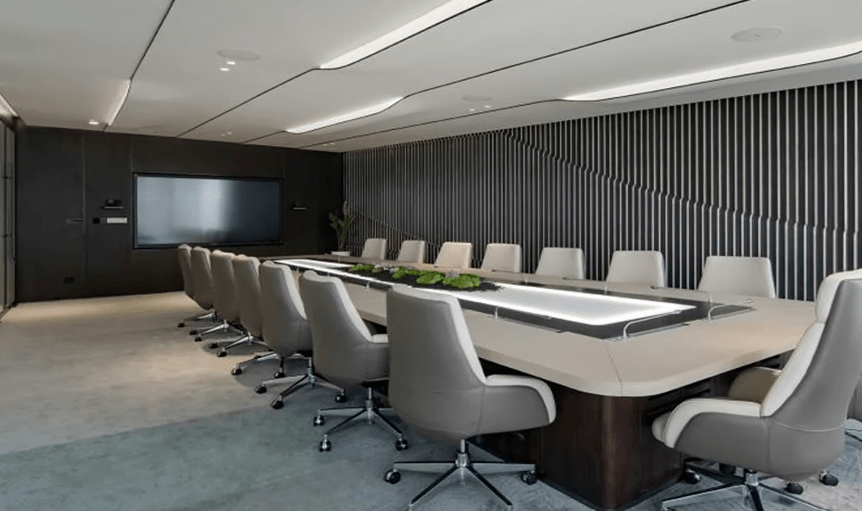
Gone are the days of tangled cables and limited mobility during presentations. Modern conference rooms are equipped with wireless presentation tools and seamless connectivity options. By utilizing wireless technologies such as Bluetooth and Wi-Fi, participants can effortlessly share presentations, documents, and multimedia content from their personal devices with the entire room. This promotes a more interactive and engaging meeting environment.
2. Screen Mirroring And Casting Devices
Screen mirroring and casting devices are becoming increasingly popular in conference rooms. With these devices, users can easily mirror their screens or cast content to a larger display, eliminating the need for individual laptops or projectors. This simplifies collaboration and allows for more dynamic presentations and discussions.
3. Wireless Charging Stations For Devices
In today’s technology-driven world, keeping devices charged is crucial. Conference rooms now incorporate wireless charging stations, allowing participants to conveniently charge their smartphones, tablets, and other compatible devices without the hassle of cables and adapters. This ensures that everyone stays connected and powered up throughout the meeting.
4. Voice Control Integration For Seamless Interactions
Voice control integration brings a new level of convenience and efficiency to conference room interactions. With voice-activated devices and virtual assistants like Alexa or Google Assistant, participants can control various aspects of the room, such as adjusting lighting, changing presentation slides, or initiating audio-video conferencing. Voice control makes meetings more seamless and frees up individuals to focus on the content being discussed.
5. Virtual And Augmented Reality Applications
Virtual and augmented reality (VR/AR) applications are revolutionizing conference room experiences. These technologies allow participants to engage in immersive virtual tours, visualize data and designs in three dimensions, and even conduct remote training sessions. VR/AR applications provide a truly interactive and engaging environment for presentations, brainstorming sessions, and collaborations.
6. Immersive Presentations And Virtual Tours
Conference rooms can now offer immersive presentations and virtual tours for enhanced visual experiences. Utilizing high-resolution displays, 3D technology, and surround sound systems, presenters can create captivating environments that transport participants to different locations or showcase products and designs from every angle. These immersive technologies are highly effective in capturing attention and conveying information.
7. Collaborative Design And Visualization Tools
Collaborative design and visualization tools enable real-time collaboration and ideation during meetings. These tools allow participants to sketch, annotate, and share ideas simultaneously on a digital canvas, promoting creativity and teamwork. With features like multi-user access and cloud storage, conference room attendees can easily collaborate and access shared materials beyond the meeting.
8. Ai-assisted Meeting Support Systems
Artificial intelligence (AI)-assisted meeting support systems enhance productivity and efficiency in conference rooms. These systems use natural language processing and machine learning algorithms to automate tasks like agenda creation, note-taking, and action item tracking. By offloading mundane tasks to AI, participants can devote more time to meaningful discussions and decision-making.
9. Intelligent Scheduling And Room Booking
Intelligent scheduling and room booking systems streamline the process of reserving conference rooms. These systems, often integrated with calendars and smart devices, allow users to check room availability, book rooms in real-time, and manage meeting schedules efficiently. This ensures that meeting spaces are utilized optimally and eliminates double bookings or conflicts.
10. Automated Transcription And Summarization
Automated transcription and summarization tools are transforming the way meetings are documented. These tools use speech recognition technology to transcribe meeting discussions into text, making it easier to review and reference important points later. Some advanced systems can even generate meeting summaries, saving time and effort in post-meeting follow-ups.
11. Real-time Language Translation For Global Meetings
In an increasingly globalized world, language barriers can hinder effective communication. Real-time language translation technologies bridge this gap by providing instant translation services. Conference rooms equipped with such systems enable participants to communicate and understand each other in their preferred languages, fostering better collaboration and inclusivity.
With these innovative technologies, conference rooms are no longer limited to traditional setups. They have become dynamic, interactive spaces that empower collaboration, creativity, and productivity. By incorporating these advancements into your conference room design, you can create a truly modern and engaging meeting environment.
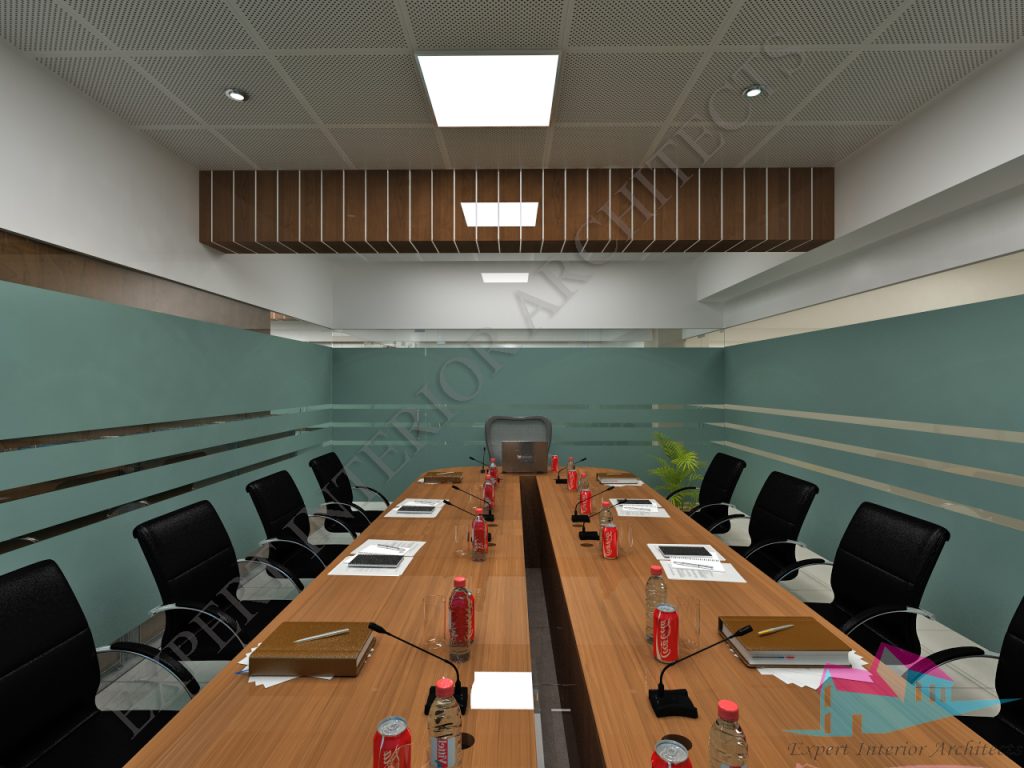
Designing For Collaboration And Productivity
Creating Comfortable And Functional Collaboration Spaces
One of the key considerations when designing a conference room for collaboration and productivity is to create comfortable and functional spaces that encourage interaction and teamwork. This can be achieved by choosing ergonomic furniture that allows for flexibility in seating arrangements. Comfortable chairs with proper lumbar support and adjustable height are essential for long meetings. Additionally, providing ample table space for laptops, notebooks, and other tools ensures that participants have a functional workspace.
Informal Seating Areas For Brainstorming Sessions
Brainstorming sessions are an important part of collaborative work, and it is crucial to design conference rooms that facilitate such sessions. Incorporating informal seating areas with comfortable sofas or lounge chairs can create a relaxed and informal atmosphere that encourages creative thinking and idea generation. These areas can be used for impromptu discussions and brainstorming sessions, allowing participants to think outside the box in a more casual setting.
Whiteboards And Interactive Surfaces For Idea Generation
Whiteboards and interactive surfaces are essential tools for idea generation and visualizing concepts. By incorporating large whiteboards or writable walls into the conference room design, participants can easily sketch out ideas, diagrams, and mind maps. This promotes collaboration and allows everyone to contribute and build upon each other’s thoughts. Interactive surfaces, such as digital whiteboards or touchscreens, can further enhance idea generation by providing additional features like virtual sticky notes, drawing tools, and the ability to save and share brainstorming sessions digitally.
Technology-enabled Tools For Real-time Collaboration
In today’s digital age, technology plays a significant role in collaboration. Integrating technology-enabled tools in conference room design facilitates real-time collaboration among team members. This can include video conferencing systems, wireless screen sharing, and collaboration software that allows participants to share and edit documents simultaneously. These tools enable remote team members to participate actively and enhance overall productivity and efficiency.
Bi-directional Communication And Engagement
In a collaborative conference room, communication should flow seamlessly between all participants. Designing the layout to facilitate bi-directional communication and engagement is essential. This can be achieved by arranging seating in a circular or U-shape formation, ensuring everyone has a clear view of each other. Additionally, using a speaker system that evenly distributes sound throughout the room and provides good microphone coverage enhances communication and ensures that everyone can be heard.
Incorporating Video Walls For Dynamic Presentations
Video walls are becoming increasingly popular in conference room design due to their ability to create visually stunning presentations. These large-scale displays can be used to showcase dynamic content, such as videos, images, and data visualizations. Incorporating a video wall in the conference room allows for impactful presentations and ensures that participants stay engaged throughout the meeting.
Interactive Q&a Systems For Audience Participation
Engaging the audience and encouraging their participation is crucial for a productive conference room environment. Implementing interactive Q&A systems, such as audience response systems or online polling tools, allows participants to ask questions, provide feedback, and vote on ideas in real-time. This not only promotes active engagement but also ensures that every voice is heard and valued.
Thoughtful Acoustic Design To Minimize Distractions
The acoustic design of a conference room greatly affects its ability to foster collaboration and productivity. Thoughtful consideration should be given to soundproofing and noise control measures to minimize distractions. This can include using acoustic panels or sound-absorbing materials on walls and ceilings, installing carpets or rugs to minimize echoing, and ensuring a well-balanced sound system for clear communication.
Inspiring Innovation Through Thoughtful Design
A well-designed conference room can inspire innovation and creativity. Consider incorporating elements that stimulate the senses and encourage out-of-the-box thinking. This could include displaying artwork or inspirational quotes, using natural lighting and plants to create a calming and energizing atmosphere, or even introducing unique design features that reflect the company’s brand and values.
Incorporating Inspiring Elements From Successful Collaborative Spaces
When designing a conference room for collaboration and productivity, it can be helpful to draw inspiration from successful collaborative spaces. Look at case studies or visit other innovative workplaces to identify features and design elements that promote collaboration and teamwork. Incorporating these inspiring elements into the conference room design can help create an environment that fosters creativity, engagement, and productivity.
Encouraging Creative Thinking With Flexible Furniture Arrangements
The arrangement of furniture in a conference room can greatly impact the overall atmosphere and encourage creative thinking. Opt for flexible furniture that can be easily rearranged and adapted to different meeting formats. This allows participants to change the layout depending on the agenda, whether it’s a brainstorming session, a presentation, or a team discussion. Flexibility in furniture arrangements promotes a sense of ownership and creativity among participants.
Designing Spaces That Reflect Company Culture And Values
A well-designed conference room should align with the company’s culture and values. Consider incorporating elements that reflect the brand identity and create a sense of belonging among employees. This could include using the company’s colors, logo, or slogans in the design, or incorporating elements that represent the organization’s values and mission. Designing conference rooms that reflect company culture and values helps create a cohesive and inspiring workspace.
Frequently Asked Questions For Conference Room Design
How Do You Design A Conference Room?
Designing a conference room involves considering technology, location, interior design, and more. To make it look nice, use soft lighting and cozy elements. You can also decorate a small conference room by pushing together small accent cabinets, setting up a coffee station, and adding cozy elements.
Consider important things like conference room furniture, accessories, design trends, dimensions, and technology for a modern and luxurious meeting space. Explore examples and inspiration on platforms like Office Snapshots, Pinterest, and Workspace Resource.
How Do You Make A Conference Room Look Nice?
To make a conference room look nice, consider these tips: 1. Choose comfortable and stylish furniture. 2. Use soft lighting to create a cozy ambiance. 3. Incorporate modern technology for easy presentations. 4. Pay attention to acoustics to reduce noise.
5. Add some decor and personalize the space.
How To Decorate A Small Conference Room?
To decorate a small conference room, consider these tips: 1. Use soft lighting for a cozy ambience. 2. Choose furniture that is functional and space-saving. 3. Incorporate technology, like a smart TV or video conferencing system. 4. Use neutral colors and minimalistic decor to create a clean and modern look.
5. Optimize acoustics by adding sound-absorbing panels or rugs.
What Is The Aspect Ratio Of A Conference Room?
The aspect ratio of a conference room refers to the proportional relationship between the width and height of the display screen or projection surface used in the room. It can vary depending on the specific setup and equipment used.
Conclusion
When it comes to conference room design, it’s crucial to create a space that is both functional and visually appealing. By considering factors such as technology, interior design, and location, you can unlock the secrets to designing a modern conference room that meets the needs of your office.
From cozy and inviting spaces to sleek and modern designs, there are endless possibilities to transform your conference room into a productive and inspiring environment. So, whether you’re looking for ideas and inspiration or are ready to embark on a conference room makeover, consider these important aspects to design a conference room that stands out.
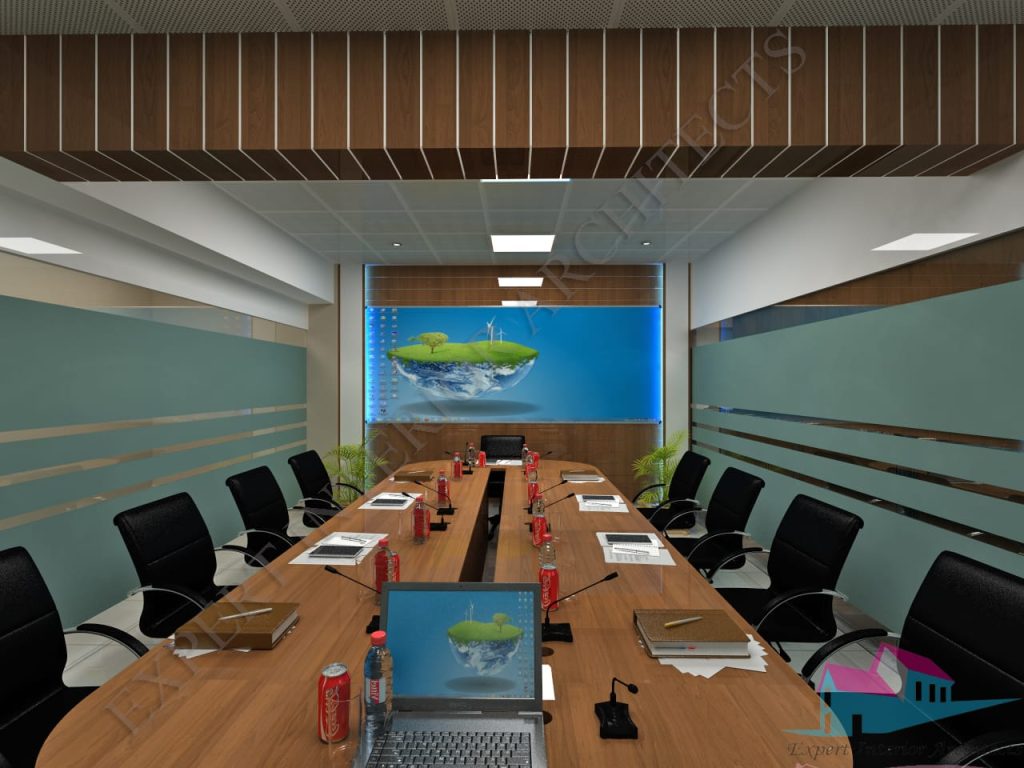
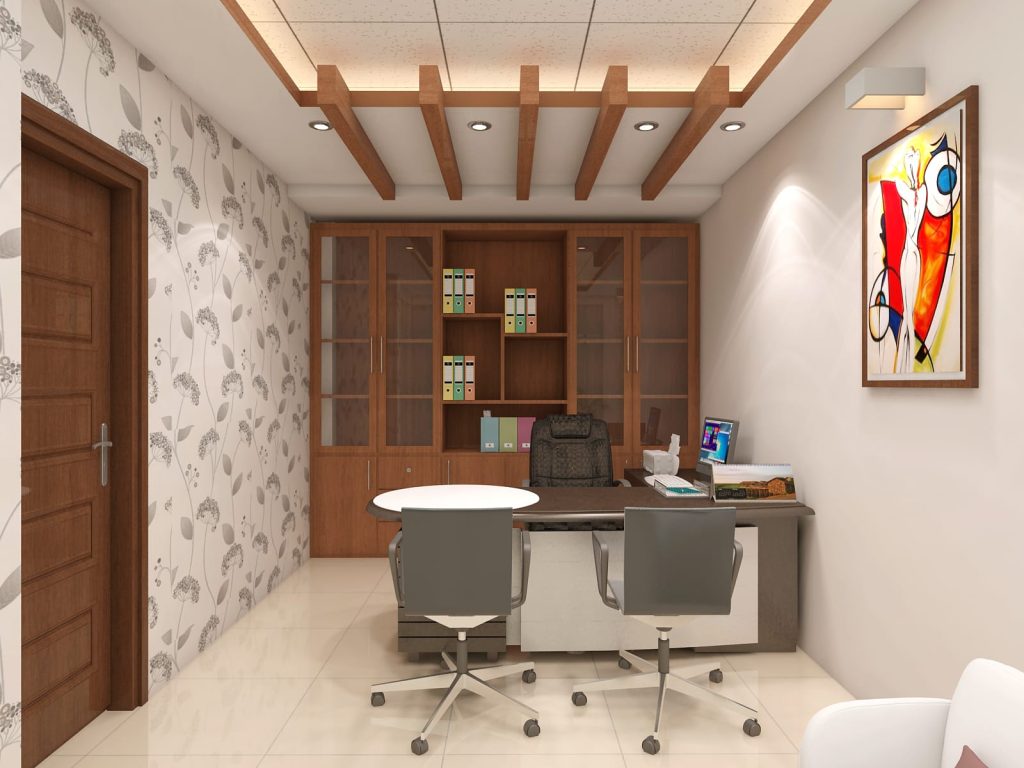
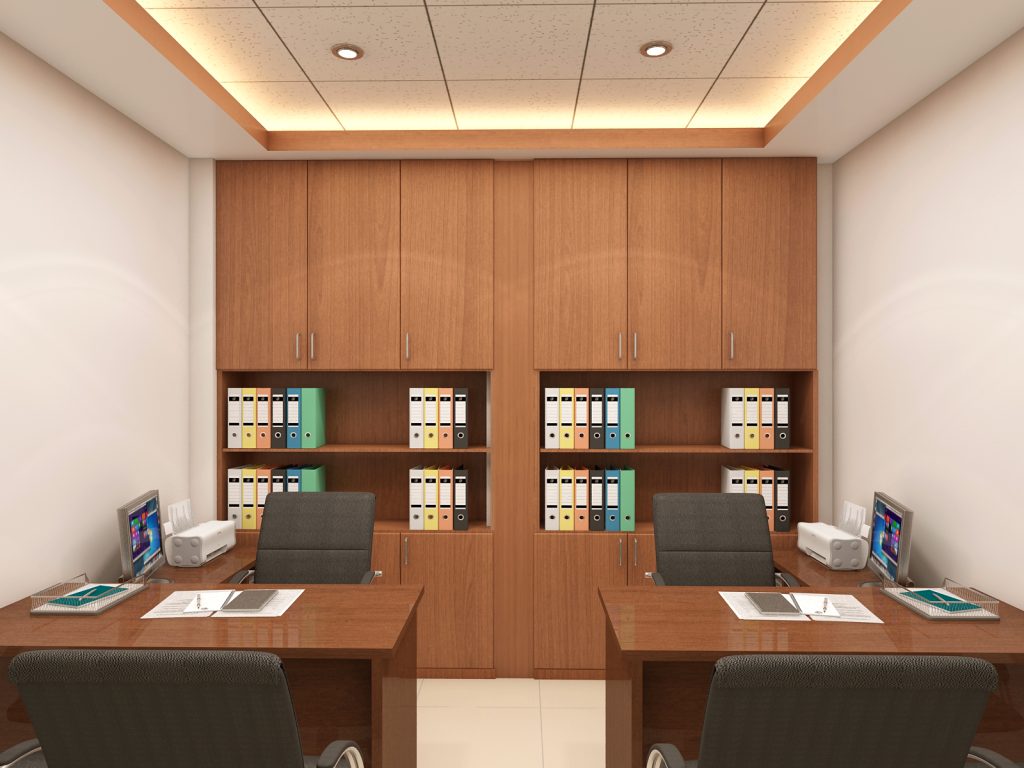
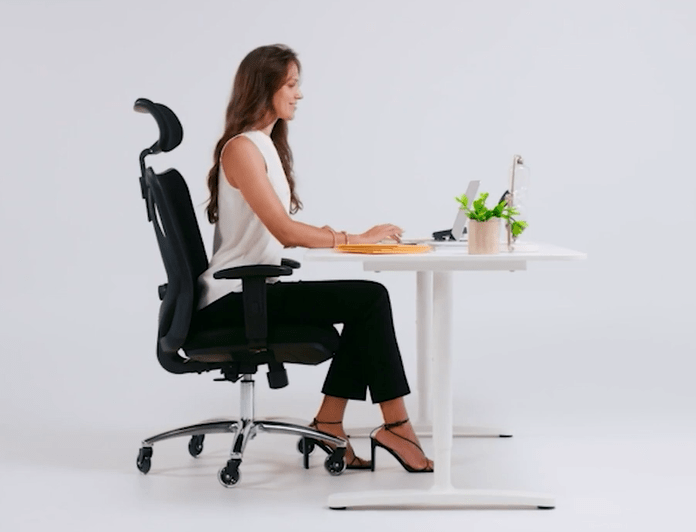
Pingback: Wall Showcase Design: Transform Your Living Space with Stylish Display - Best Interior Designer In Dhaka | Expert Interior Architects
Pingback: Wall Showcase Design In Bangladesh : Transform Your Living Space
Pingback: How To Choose Office Table In Bangladesh? A Comprehensive Guide
Pingback: Building Design in Bangladesh: Unleashing Creative Excellence